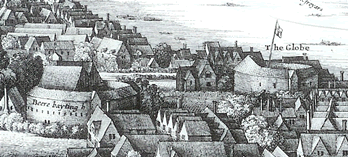RICHARD III
What is the play about?
Richard III is determined to become King. Once his brother Edward, the current king, dies, Richard takes the crown. Consumed by paranoia and ambition, he is responsible for several murders of people who threaten his position. With his reign as king based strongly on fear, Earl of Richmond announced war on Richard. The night before Richard is haunted by the ghost of his victims in his dreams, and then dies in battle.
When was it performed?
The earliest record of a performance of Richard III is 1633, when it was performed for King Charles on the 16th of November. Although now early records have been discovered, researchers have found the play was a big success. It went through 6 editions from the time it was written before it was included in an edition of all of Shakespeare's plays in 1623. This shows the plays popularity within Elizabethan society.
Contemporary Production of Richard III
In 2016, the BBC produced a three part TV series of Richard III with Benedict Cumberbatch as Richard. I found it very inspiring when researching the new productions of the play to find that the text is still being used and modified in a whole variations of ways. The most interesting production I found was Barry Kyle's Richard III, performed in 2003 with an all female cast.
Kathryn Hunter played Richard III in this controversial take on the play. Although female actors in nothing shocking in modern theatre, a lot of reviews say that the use of an all female cast gave the play a pantomime feel and took away the brutality of the story. The telegraph said that "Richard III needs to be more than an entertaining stand-up, and here Hunter falls short. She may make the audience laugh, but she rarely makes them shiver. The essential touch of the psycho is largely absent from this performance, only really caught in the furious moment when she seizes one of the young princes by the hair and repeatedly bashes his head against the floor". However, Barry did receive praise for the staging and set. The Elizabethan costumes were detailed and intricately expressed the grandeur of 1600s royalty. In terms of style and production, it was kept very traditional and true to the time. In order to not over complicate the story, Barry used the female cast as a subtly nod to modernisation but that was where the contemporary element stopped. The stage, characterisation and costumes all reflected the Elizabethan era.
Unfortunately my character was not in the original script was was created purely for this production, therefore I am unable to research it.






